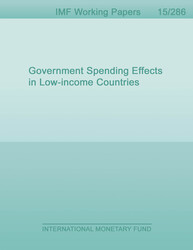
Government Spending Effects in Low-income Countries
Despite the voluminous literature on fiscal policy, very few papers focus on low-income countries (LICs). This paper develops a new-Keynesian small open economy model to show, analytically and through simulations, that some of the prevalent features of LICs-different types of financing including aid, the marginal efficiency of public investment, and the degree of home bias-play a key role in determining the effects of fiscal policy and related multipliers in these countries. External financing like aid increases the resource envelope of the economy, mitigating the private sector crowding out effects of government spending and pushing up the output multiplier. The same external financing, however, tends to appreciate the real exchange rate and as a result, traded output can respond quite negatively, reducing the overall output multiplier. Although capital scarcity implies high returns to public capital in LICs, declines in public investment efficiency can substantially dampen the output multiplier. Since LICs often import substantial amounts of goods, public investment may not be as effective in stimulating domestic production in the short run.
Publication date: December 2015
ISBN: 9781513578972
$18.00
Add to Cart by clicking price of the language and format you'd like to purchase
Available Languages and Formats
| English |
Prices in red indicate formats that are not yet available but are forthcoming.
Topics covered in this book
This title contains information about the following subjects.
Click on a subject if you would like to see other titles with the same subjects.
Economics- Macroeconomics , Economics / General , International - Economics , Fiscal Policy , Low-income Countries , Public Investment , Fiscal Multipliers , Small Open DSGE Models , Aid
Summary
Copyright © 2010 - 2024
Powered by:
AIDC



